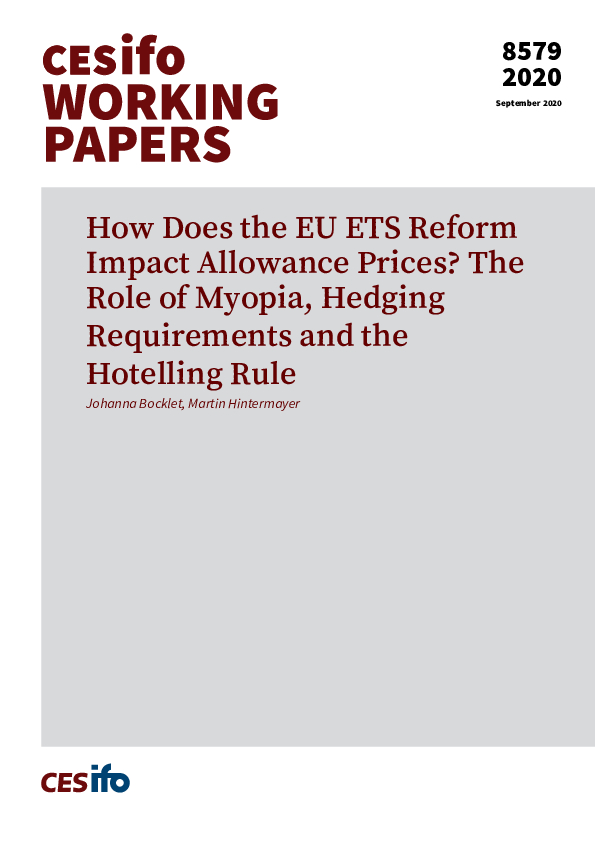How Does the EU ETS Reform Impact Allowance Prices? The Role of Myopia, Hedging Requirements and the Hotelling Rule
CESifo, Munich, 2020
CESifo Working Paper No. 8579

This paper uses a discrete-time partial equilibrium model of the European Emissions Trading System (EU ETS) to analyze the impact of the recent reform on allowance prices. By including bounded rationality such as myopia or hedging requirements, we find that the Hotelling price path is no longer visible ex-post even though the Hotelling price rule holds ex-ante in the decision making of the firms. Myopia and hedging requirements have little impact in the pre-reform market but strongly drive market outcomes after the reform. In the post-reform market, hedging requirements in combination with restrictive allowance supply may even cause a physical shortage of allowances. Yet, neither form of bounded rationality can fully explain the market outcomes in the third trading period of the EU ETS. If myopia and hedging requirements are considered simultaneously, the price increase in the EU ETS can be attributed to the reform fundamentals.
Resources and Environment
Energy and Climate Economics